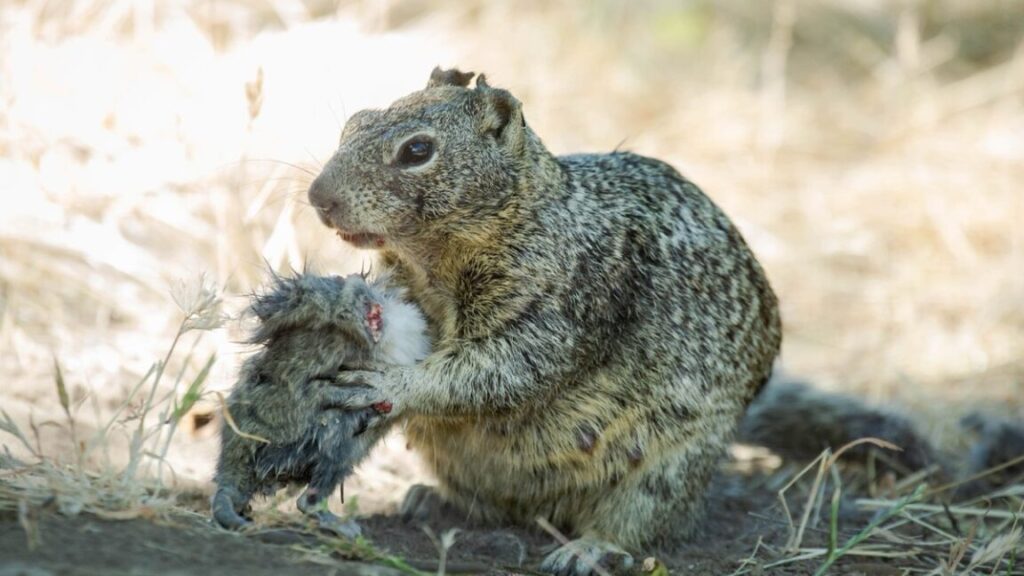
They seem so sweet and innocent but these squirrels are also opportunistic killers.
We think of squirrels as adorably harmless creatures, admiring their bushy tails and twitchy little noses and the way they cram their cheeks with nuts or seeds to bring back to their nests for later. But the rodents turn out to be a bit more bloodthirsty than we thought. According to a new paper published in the Journal of Ethology, California ground squirrels have been caught in the act—many times over—of chasing, killing, and eating voles.
Co-author Jennifer Smith, a biologist at the University of Wisconsin, Eau Claire, described the behavior as “shocking,” given the sheer number of times they watched squirrels do this. “We had never seen this behavior before,” she said. “Squirrels are one of the most familiar animals to people. We see them right outside our windows; we interact with them regularly. Yet here’s this never-before-encountered-in-science behavior that sheds light on the fact that there’s so much more to learn about the natural history of the world around us.”
Squirrels mainly consume acorns, seeds, nuts, and fruits, but they have been known to supplement that diet with insects and, occasionally, by stealing eggs or young hatchlings from nests. And back in 1993, biologist J.R Callahan caused a stir by reporting that as many as 30 species of squirrel could be preying on smaller creatures: namely, fish, amphibians, reptiles, birds, and the occasional small mammal.
However, much of that evidence is based on analyzing the stomach contents of dead squirrels, either in the wild, in zoos, or caught in traps. That made it challenging to determine whether the squirrels were scavenging or actively hunting those creatures. When hunting behavior by squirrels has been observed in the field, it’s usually been a single isolated indent.
California ground squirrels are also mostly “granivorous,” although they have been known to eat bird eggs or the nestlings of local quail, pheasant, domestic chickens, and robins. There have been only a handful of reports of squirrels actually killing small animals; mostly, they scavenge. That’s what makes this latest study so intriguing.
Run, vole, run
The current research is part of an ongoing long-term behavioral ecology study of ground squirrels in a section of Briones Regional Park in California. Beginning in 2013, project members have live-trapped, marked, and released local squirrels every June and July, when the population is most active above ground. Individual squirrels are marked with metal ear tags and painted with a unique fur mark on their backs for easier visual identification. Squirrel behavior is recorded on video for analysis, with additional statistical analysis to shed light on the demographics of any interesting behavior. Team members also take photographs while in the field and note direct observations of squirrelly behavior.